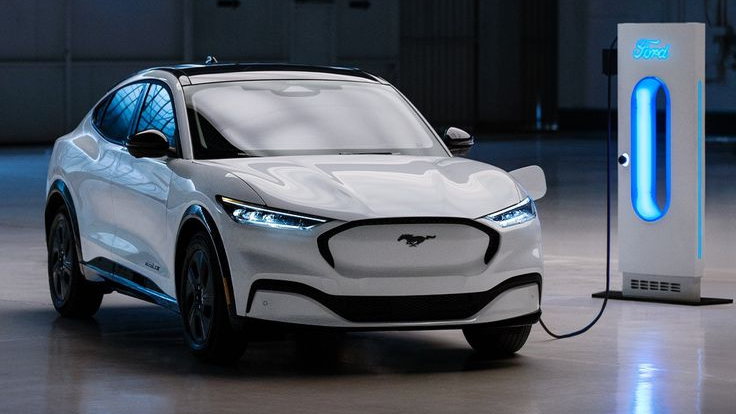Commercial road freight is laggingbehind passenger vehicles in decarbonization, but the economic landscape is changing. New opportunities are arising in areas like fueling services and battery recycling, which are becoming key battlegrounds for innovation and competition.
Commercial transport is on the brink of a significant change, driven by the adoption of zero-emission vehicles. This shift promises to introduce new business models and value chains, reshaping the competitive landscape. Stakeholders in the freight industry must analyze these potential changes and consider how to best leverage new technologies and methodologies.
As noted in previous discussions, commercial vehicles contribute about one-third of transportationemissions but are behind passenger vehicles in decarbonization. The primary challenge is the technical difficulty of electrifying larger vehicles that travel long distances. Despite this, industry leaders recognize that large-scale electrification can protect them from regulatory pressures and offer long-term cost benefits. By 2030, most decarbonization scenarios are expected to achieve cost parity with internal combustion engine (ICE) vehicles, making it a viable horizon for capital investments.
The strongest argument for speeding up decarbonization is the broader impact of new propulsion technologies. Companies will need various services, such as electrification planning, depot upgrades, and energy optimization advisory, which could be worth $4 to $5 million in the United States alone by 2030. These services can be provided by both industry insiders and external operators who can scale up their capabilities quickly
Companies that succeed in decarbonization will capture new revenue streams and gain favor with sustainability-conscious customers. The market is open for companies to establish their propositions and gain market share. Traditional market ownership rules do not apply to these new opportunities. For instance, original equipment manufacturers (OEMs) can compete with fleet telematics and services companies for charging business, and regional utilities and fleet management service (FMS) providers may find new opportunities in this space. This will likely result in a dynamic ecosystem with competition among vertical and horizontal players.
To capitalize on these opportunities, companies must make strategic decisions regarding decarbonization. They need to assess their competitive advantages and decide whether to expand internally or through partnerships and acquisitions. Important questions include: Can we win in this new value pool against both current and future competitors? What internal capabilities and risks are associated with building a new business? Should we scale organically or through acquisitions?
To forecast the evolution of the value chain, we analyzed six major industry segments: OEMs, FMS providers, charging providers, oil and gas companies, utilities, and dealer maintenance and repair services. Our analysis shows that fueling services and battery recycling will be major battlegrounds, with most players having viable paths to engagement.
The charging station operations market is evolving. In Europe, utilities own many charging stations, while in the United States, private businesses or OEMs control most stations. The Bipartisan Infrastructure Law will provide $7.5 billion in funding, suggesting that companies should consider the benefits of deeper involvement:
– OEMs: Building private charging networks can deepen customer relationships and increase retention.
– FMS Providers: Including charging in service offerings can leverage economies of scale.
– Oil and Gas Companies: They can retrofit existing depots with charging technologies and build new charging depots efficiently.
– Utilities: With their experience in grid construction, they can add charging stations to their plans and offer consulting services.
Fleet operators will need help with forecasting power requirements and managing electricity price fluctuations, requiring advice on peak shaving, charging optimization, and bidirectional charging.
The battery recycling market faces supply chain constraints and raw material shortages but is expected to grow to $13 billion in the United States by 2040. Commercial application batteries can last up to 12 years and be repurposed afterward, offering opportunities for various players:
– OEMs: They can use their relationships with fleet customers to access aging batteries.
– FMS Providers: They handle maintenance and end-of-life decommissioning, providing a steady supply of used batteries.
– Dealers: Often partnering with OEMs, they can participate in battery recycling.
– Charging Providers: They can offer incentives for used batteries, reinforcing their core business.
– Utilities: Used vehicle batteries can provide static storage on grids, requiring industry relationship development.
New entrants will need to manage expensive production environments and complex operations like pyrometallurgy.
Three types of players have strong propositions through vertical integration:
– OEMs: Established in both ends of the value chain, they need to develop charging service businesses, transition to mobile maintenance models, and hire skilled labor for recycling operations.
– FMS Providers: They can leverage data on fueling patterns to optimize charging locations and form partnerships to build charging networks.
– Utilities: With operational knowledge to build charging networks and smart-grid software, they should acquire manufacturing expertise and develop commercial fleet market capabilities.
As new markets in fueling services and fleet disposal grow, commercial vehicle players must strategically position themselves. Companies with holistic capabilities, like OEMs or FMS providers, will capture new value pools, while powerful new partnerships may also emerge. Decision-makers must adopt a strategic approach to determine where and how to compete effectively in the future of freight.


